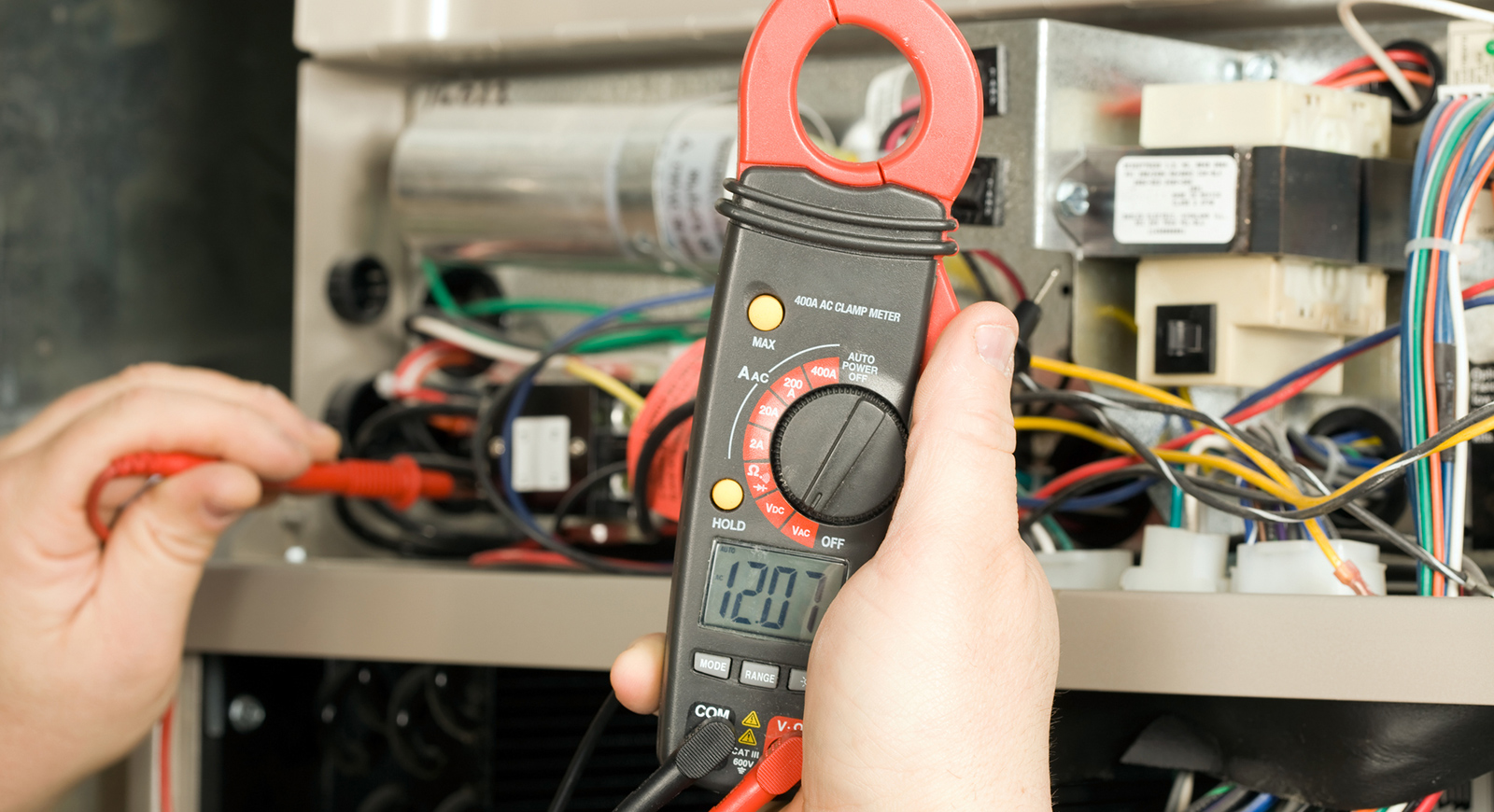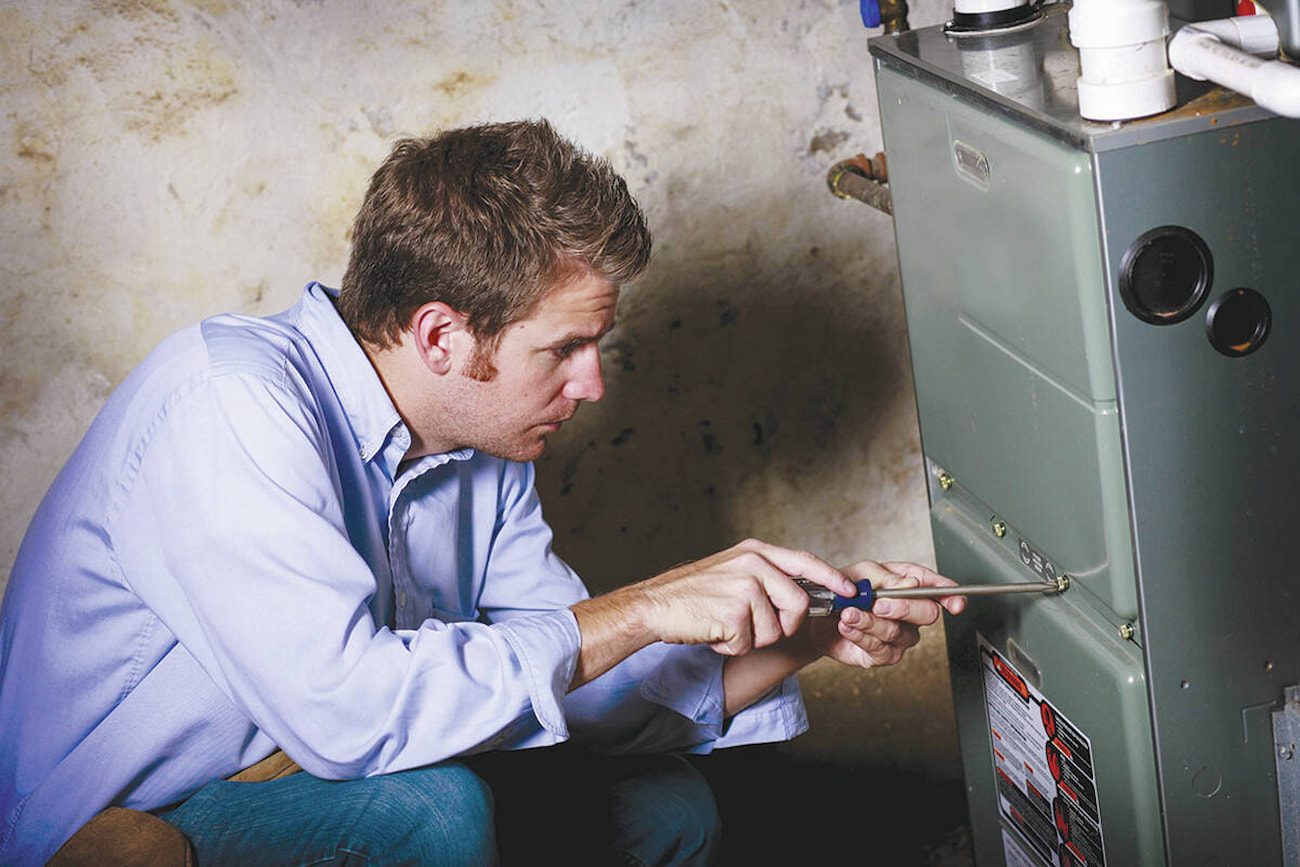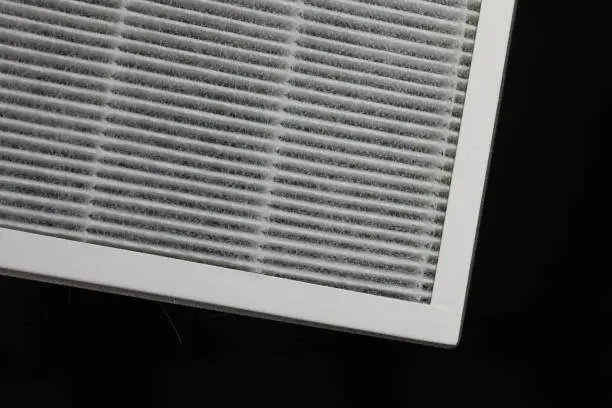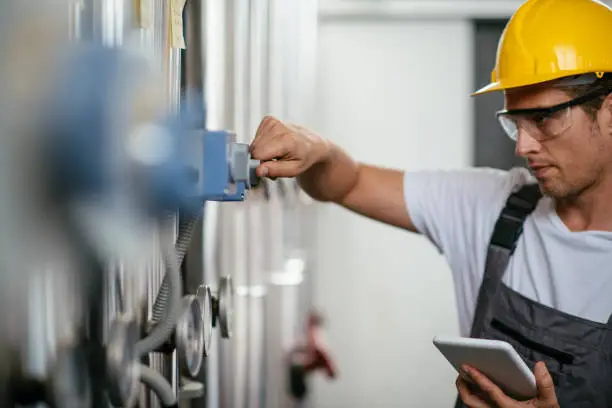
Table of Contents
In the heart of every comfortable home during chilly Canadian winters, lies a silent hero: the furnace. This essential equipment works tirelessly, often unnoticed, until, unfortunately, it doesn’t. That’s where the importance of regular maintenance comes into sharp focus. At HVAC Service Solutions, we understand the integral role your furnace plays in your home. Through this article, we aim to shed light on the why’s and how’s of furnace maintenance, ensuring your cozy haven remains just that, cozy.
Understanding Your Furnace: Types and Components
Understanding furnace types and components is essential for homeowners. Furnaces are primarily classified into three categories: gas, electric, and oil. Each type operates distinctly and serves different requirements and preferences.
Gas Furnaces
Gas furnaces are the most common type in Canadian homes. They use natural gas as fuel, which is burned to produce heat. The key components of a gas furnace include:
- Burner: Where the gas is burned to produce heat.
- Heat Exchanger: A metal chamber where the heat from the burner warms the air without directly coming into contact with it.
- Blower Motor: This component circulates the warmed air throughout your home.
- Flue or Vent Pipe: Responsible for venting out exhaust gases safely outside your home.
Safety features are paramount in gas furnaces, including flame sensors and thermocouples, which ensure that the gas flows only when a flame is present.
Electric Furnaces
Electric furnaces are popular for their simplicity and safety. They use heating elements to warm the air, which are essentially large electrical resistors. Components of an electric furnace include:
- Heating Elements: These coils become hot when electricity passes through them.
- Thermostat: Controls the temperature by regulating the electricity flow to the heating elements.
- Air Handler: This includes the blower motor and the elements and is responsible for circulating warm air.
Electric furnaces are generally smaller and easier to maintain than gas furnaces but can be more expensive to operate due to electricity costs.
Oil Furnaces
Oil furnaces are less common but are used in areas where natural gas and electricity are less accessible. They operate similarly to gas furnaces but use oil as fuel. Key components include:
- Oil Burner: Where oil is mixed with air, atomized and ignited to produce heat.
- Heat Exchanger: Similar to gas furnaces, it heats the air without direct contact with the flame.
- Fuel Storage Tank: Stores the oil used for heating.
Oil furnaces require more frequent maintenance, such as cleaning soot and debris from the system.
Common Components Across All Furnace Types
While the types of furnaces vary, several components are universal across all models:
Filters: Trap dust, dirt, and other airborne particles. Regular replacement or cleaning is necessary for efficient operation.
Thermostat: The control center for your furnace, setting the desired temperature and regulating the furnace’s operation.
Ductwork: The network of tubes that distributes the heated air throughout your home.
Safety Controls: Including limit switches and pressure switches, these components ensure the safe operation of your furnace.
Understanding these components and their functions helps in recognizing the signs of potential issues and the need for maintenance.
Find more information about furnace types and their advantages in our complete furnace market guide via the link below.
https://thehvacservice.ca/navigating-the-2023-furnace-market-top-expert-tips-and-advice/
Regular Maintenance: What and Why

Regular maintenance of a furnace involves a series of routine checks and procedures to ensure that your heating system operates effectively and safely. It includes inspecting and cleaning various components of the furnace, such as the blower motor, heat exchanger, and air filters. These maintenance activities are designed to keep your furnace running smoothly, preventing problems before they arise.
Why is Regular Maintenance Important?
The importance of regular furnace maintenance cannot be overstated. It is vital for several reasons: firstly, it ensures the efficient operation of your furnace, which can significantly reduce your energy bills. Secondly, regular maintenance extends the lifespan of your furnace, preventing costly repairs or premature replacement. Most importantly, it safeguards the health and safety of your household by preventing hazardous situations like gas leaks or fire risks.
What Does Regular Maintenance Include?
Key aspects of regular maintenance include:
- Filter Replacement: Furnace filters should be replaced or cleaned every 90 days, or more often in homes with pets or high dust levels. This ensures clean air circulation and maintains furnace efficiency.
- Thermostat Checks: Regularly checking the thermostat ensures it functions correctly, providing optimal heating and efficiency.
- Inspection of Electrical Components: This involves checking for any loose connections and ensuring the electrical system operates safely.
- Lubrication of Moving Parts: Parts like the blower motor and fan require lubrication to minimize friction, which prevents wear and tear and conserves energy.
Each of these tasks plays a crucial role in maintaining the efficiency, safety, and longevity of your furnace, making regular maintenance an indispensable aspect of home care.
Professional Furnace Maintenance

Annual furnace maintenance, conducted by professional HVAC technicians, is an essential practice for any homeowner. This yearly ritual is more than just a preventative measure; it’s a proactive strategy to ensure your furnace functions optimally throughout the year. Scheduling annual furnace maintenance, ideally before the onset of the colder months, can be the difference between a cozy winter and an unexpected, chilly inconvenience.
You can find more specific information on how often you should maintain your furnace and clean your ducts in our previous article.
What Does Professional Furnace Inspection Involve?
A thorough furnace inspection is a cornerstone of professional maintenance. During a furnace inspection, HVAC technicians perform a comprehensive evaluation of your entire heating system. This involves much more than just a cursory look; it’s a detailed examination to identify any potential issues that might disrupt your home’s comfort and safety.
A typical furnace inspection includes:
- Thorough Cleaning: Accumulated dust and debris, which can significantly hinder performance, are removed.
- Safety Checks: Crucial for gas and oil furnaces, these checks ensure no leaks or hazards exist.
- Efficiency Evaluation: Ensuring your furnace operates at its peak efficiency to save on energy costs.
- Component Inspection: Detailed examination of all vital components, including the heat exchanger, blower motor, and more.
The Importance of Scheduling Annual Furnace Maintenance
Scheduling annual furnace maintenance is not just about adhering to a routine; it’s about safeguarding your investment in your home. Regular furnace inspection and maintenance by professionals can detect minor issues before they escalate into major, costlier problems. Additionally, annual furnace maintenance ensures that your furnace complies with warranty requirements, often necessitating professional inspection and servicing.
Annual Furnace Maintenance: A Step Towards Longevity
Incorporating annual furnace maintenance into your home care routine is a smart decision. Not only does it enhance the safety and efficiency of your heating system, but it also extends the lifespan of your furnace. A regular furnace inspection can reveal subtle signs of wear and tear, allowing for timely repairs and adjustments.
As the seasons change, ensuring your furnace is in top condition is crucial for a comfortable home. Don’t wait for the cold to set in. Take the proactive step now and schedule your annual furnace maintenance with HVAC Service Solutions. Our team of experienced professionals in Canada is equipped to provide a thorough furnace inspection and maintenance service, ensuring your system runs efficiently and safely.
DIY vs. Professional Services: Understanding the Limitations
When it comes to furnace maintenance, distinguishing between DIY tasks and those requiring professional services is critical. While some maintenance aspects, like changing air filters or simple thermostat checks, are manageable for most homeowners, the complexities of furnace systems often demand professional expertise.
DIY Furnace Maintenance
Homeowners can undertake minor tasks such as filter replacements, basic cleaning, or thermostat adjustments. These actions are straightforward and can be performed safely without specialized knowledge. However, the DIY approach has its limits, especially when it involves intricate furnace components or safety checks.
Professional Maintenance
Professional services are essential for tasks that go beyond basic maintenance. This includes detailed furnace inspection, handling gas or electrical components, and addressing wear and tear that may not be visible or understandable to the untrained eye. Professionals bring not only their expertise but also the necessary tools and safety protocols to ensure that your furnace operates efficiently and safely.
By understanding these limitations, you can make informed decisions about furnace maintenance, ensuring your efforts are both safe and effective.
Conclusion
As we’ve explored, regular furnace maintenance is not just a good practice but a vital one. From the simple task of replacing a filter to the more complex professional checks, each step contributes to a warm, safe, and efficient home. If it’s been a while since your furnace had a professional checkup, or if you’re unsure about your maintenance schedule, it’s time to reach out. Contact HVAC Service Solutions via the link below to schedule your maintenance appointment and ensure your furnace is ready to keep you warm all winter long.
FAQs
What are the benefits of regular furnace maintenance?
Regular furnace maintenance is essential for several reasons. Firstly, it ensures the furnace operates at peak efficiency, which can significantly reduce energy bills. Secondly, routine checks can extend the lifespan of your furnace, helping avoid costly repairs or premature replacement. Most importantly, maintenance is crucial for safety, minimizing risks such as gas leaks or fire hazards in furnaces that use combustible fuels. Additionally, it helps maintain indoor air quality by ensuring the furnace is not circulating dust or other allergens.
How often should I change my furnace filter?
The furnace filter should typically be changed every three months, although this can vary based on usage and environmental factors. Regularly changing the filter prevents clogging with dirt, dust, and debris, ensuring the furnace doesn’t overwork and consume excessive energy. A clean filter also contributes to better air quality in your home. For homes with pets or high levels of dust, more frequent changes might be necessary.
What is involved in a professional furnace maintenance service?
Professional furnace maintenance encompasses a thorough inspection and servicing of the furnace. This includes inspecting duct systems for leaks, checking the heat exchanger for damage, cleaning blower wheels, testing safety controls, and ensuring efficient operation of all components. These checks are vital for both safety and efficiency, as they can identify issues before they become major problems.
When is the best time to schedule furnace maintenance?
The best time for furnace maintenance is annually, ideally in the fall before the heating season begins. This timing ensures that any issues are addressed before the furnace is needed for continuous use, preventing mid-season breakdowns and ensuring efficient operation throughout the winter.
Can I perform any furnace maintenance tasks myself?
Homeowners can perform certain maintenance tasks such as changing or cleaning the furnace filter, ensuring clear space around the furnace for airflow, and testing carbon monoxide detectors. These tasks are important for the furnace’s efficiency and safety but are limited in scope. Complex issues and comprehensive checks should be left to professionals.
What should I do if my furnace thermostat doesn’t work?
If your furnace thermostat isn’t working properly, here’s a shortened guide on how to troubleshoot it:
- Power Check: Ensure the thermostat has power. Replace batteries if it’s battery-operated, or check the circuit breaker or fuse box for wired thermostats.
- Clean the Thermostat: Open the thermostat and gently clean out any dust or debris using a soft brush or compressed air.
- Inspect Wiring: Check all wire connections for looseness or corrosion. Turn off the power before doing this.
- Verify Settings: Make sure the thermostat is set to “heat” and the temperature setting is appropriate.
- Calibration and Age: If your thermostat is old, it may need recalibration or replacement.
- Furnace Check: Ensure the problem isn’t with the furnace itself.
- Professional Help: If these steps don’t work, or if you’re unsure, contact a professional HVAC technician.
Regular maintenance is crucial for preventing such issues. For more detailed troubleshooting, consult the manufacturer’s manual or a professional.
Why might my furnace not be functioning properly?
Common causes of malfunction:
- Clogged Filter: A dirty filter can restrict airflow, causing the furnace to work harder, leading to overheating and potential shutdown.
- Thermostat Issues: Incorrect thermostat settings or malfunctions can prevent the furnace from turning on.
- Ignition or Pilot Light Problems: For gas furnaces, issues with the ignition system or pilot light can prevent the furnace from firing up.
- Mechanical Wear and Tear: Over time, components like belts and bearings can wear out, affecting furnace operation.
- Electrical Problems: Issues with the electrical connections or power supply can impede furnace functionality.
- Blocked Vents or Ductwork: Blocked vents or ductwork can restrict airflow, causing uneven heating or system strain.
- Dirty Burners: In gas furnaces, unclean burners can affect efficiency and safety.
- Safety Switches: Modern furnaces have safety switches that can shut down the system if a problem is detected, like an open access panel.
What signs indicate I need furnace maintenance?
- Unusual Noises: Banging, whistling, or grinding noises can indicate mechanical problems.
- Frequent Cycling: If the furnace turns on and off more frequently than normal, it may need maintenance.
- Higher Energy Bills: An unexpected increase in energy bills can suggest the furnace is running inefficiently.
- Poor Heating Performance: If the furnace doesn’t provide enough heat or if there are cold spots in the house, it may need servicing.
- Yellow Flame in Gas Furnace: The flame should be blue; a yellow flame indicates a problem, possibly with the gas mixture or venting.
- Thermostat Adjustments: Needing to constantly adjust the thermostat can be a sign of furnace issues.
- Age of the Furnace: Older furnaces (over 15 years) may require more frequent maintenance.
What safety risks can be prevented with regular furnace maintenance?
Regular maintenance is crucial for preventing safety risks such as carbon monoxide leaks, gas leaks, and fire hazards, especially in furnaces that use combustible fuels. Regular checks can identify potential issues early, ensuring safe operation and peace of mind for homeowners.
Is annual furnace maintenance necessary for all types of furnaces?
Annual furnace maintenance is necessary for all types of furnaces, including gas, electric, and oil. This maintenance ensures optimal performance, safety, and energy efficiency. Regular checks are crucial regardless of the furnace type to address any wear and tear and maintain the unit in good working condition.
Share


















